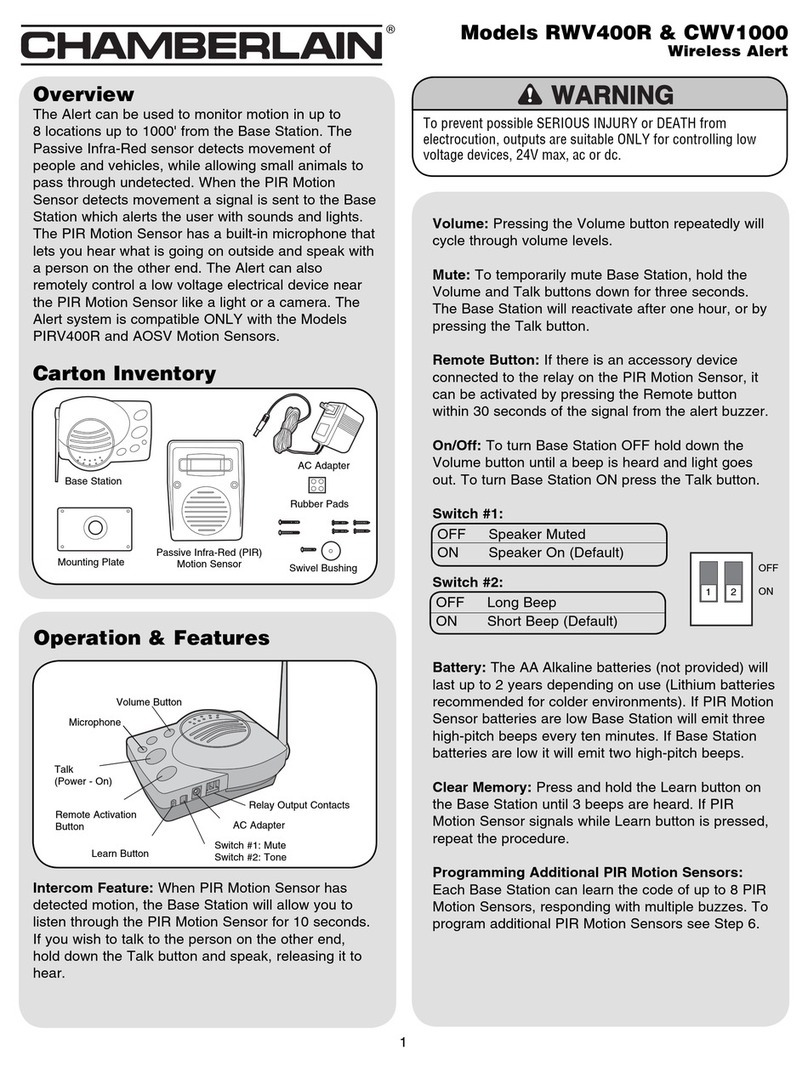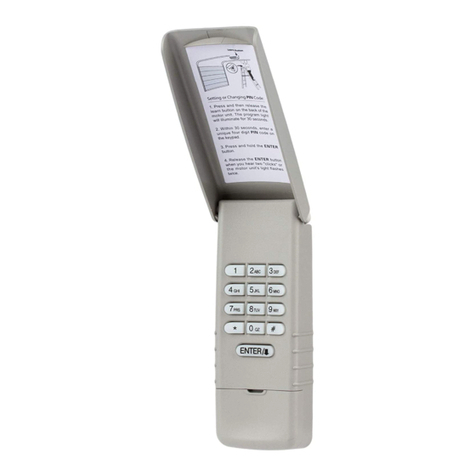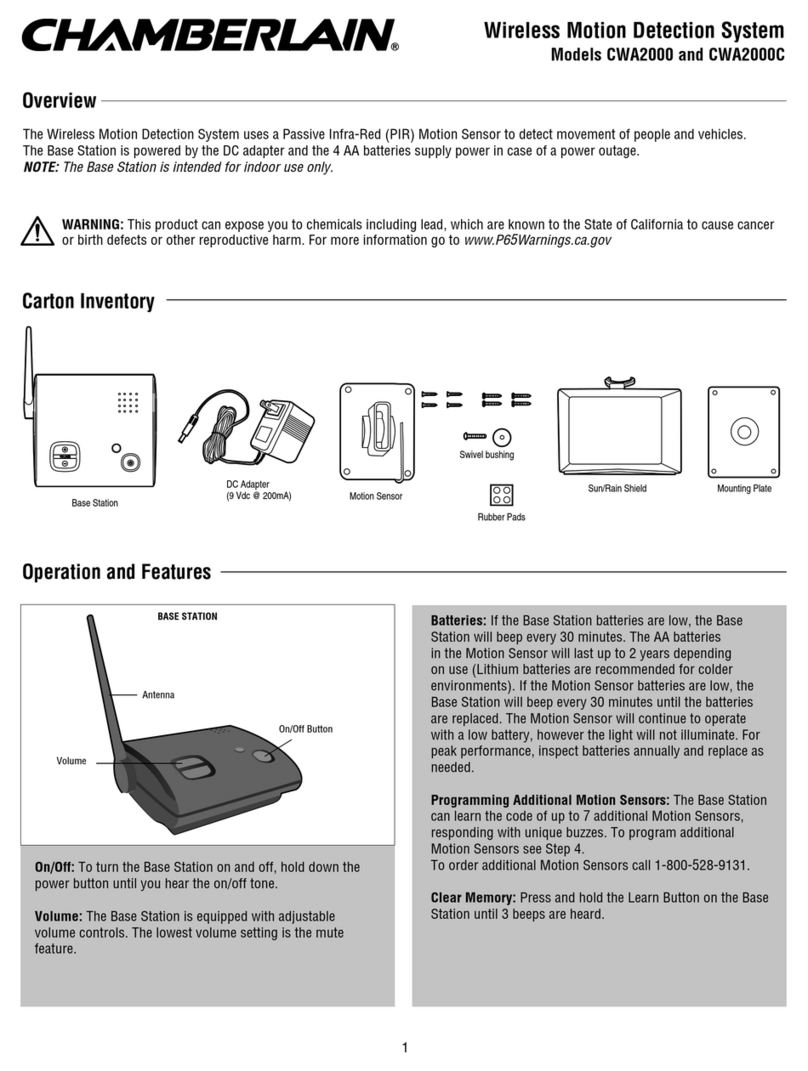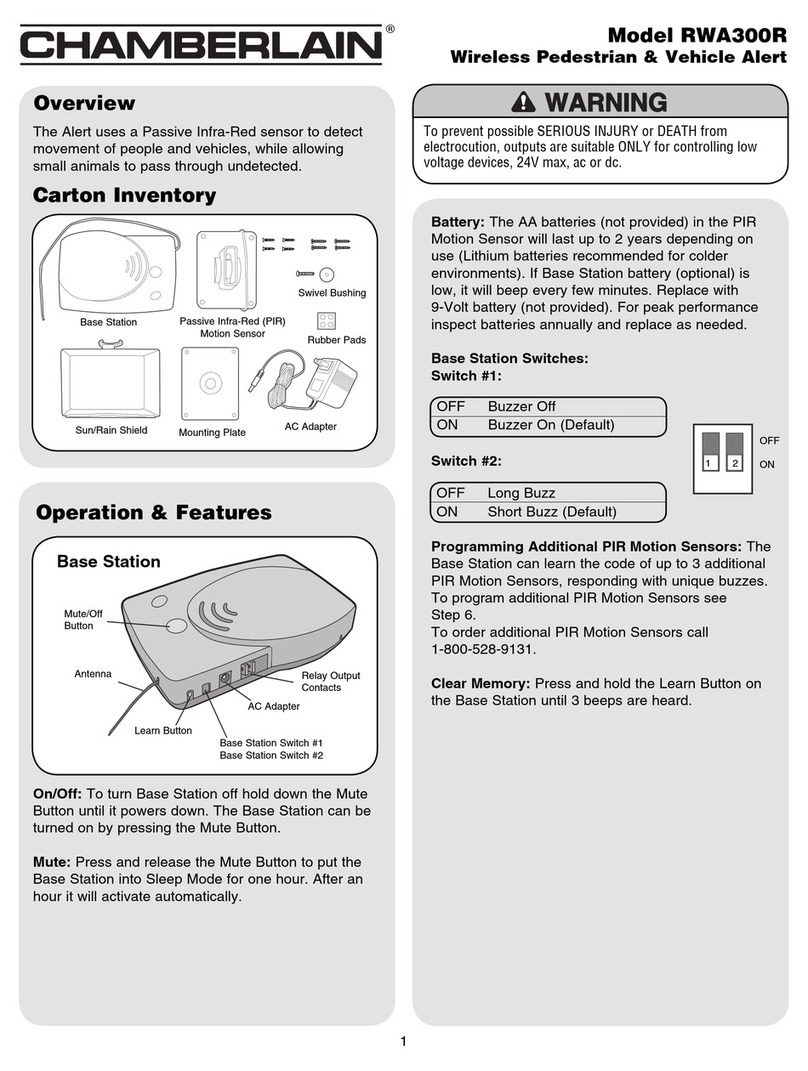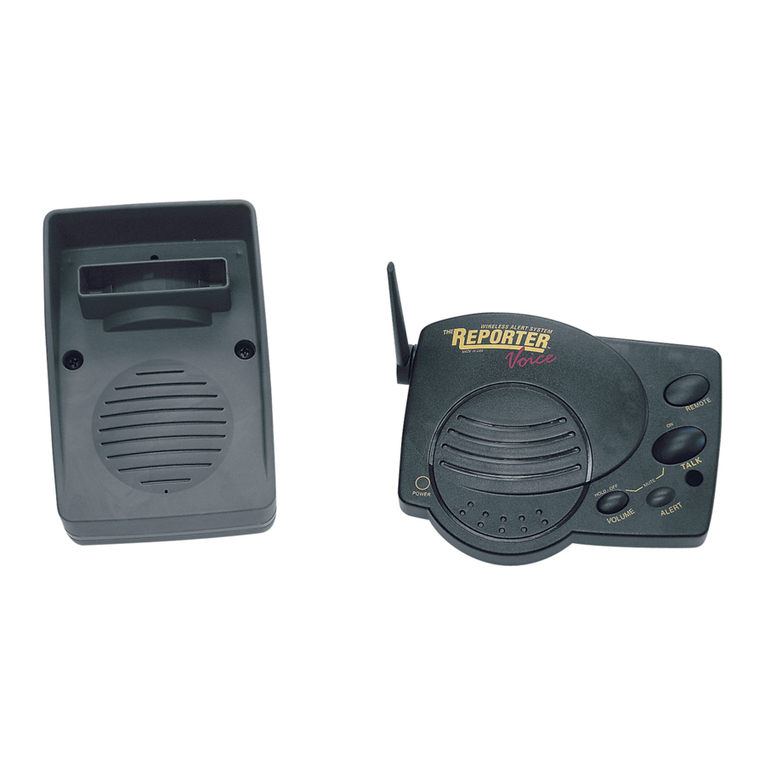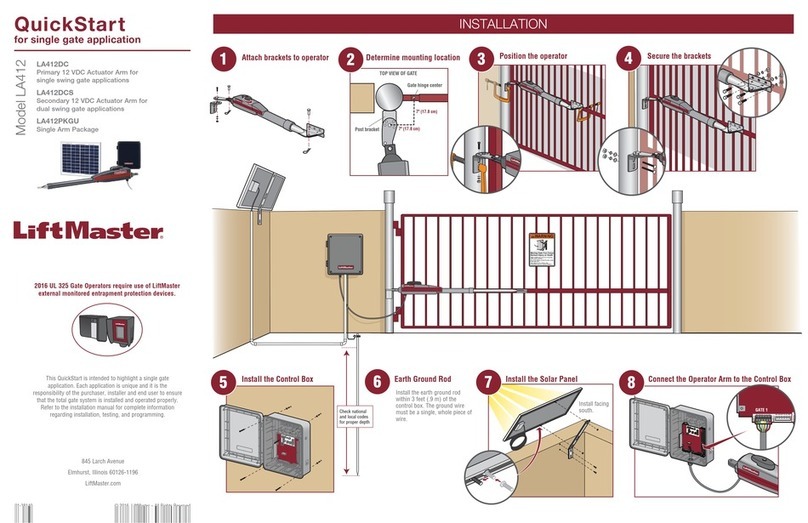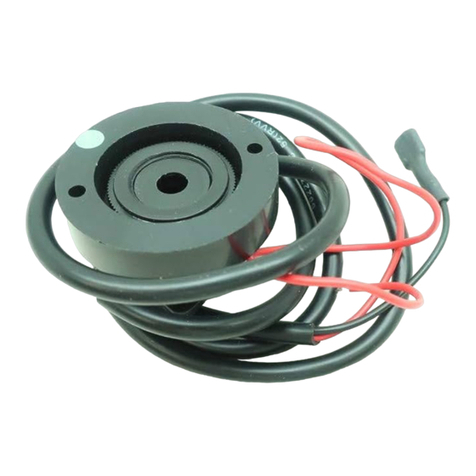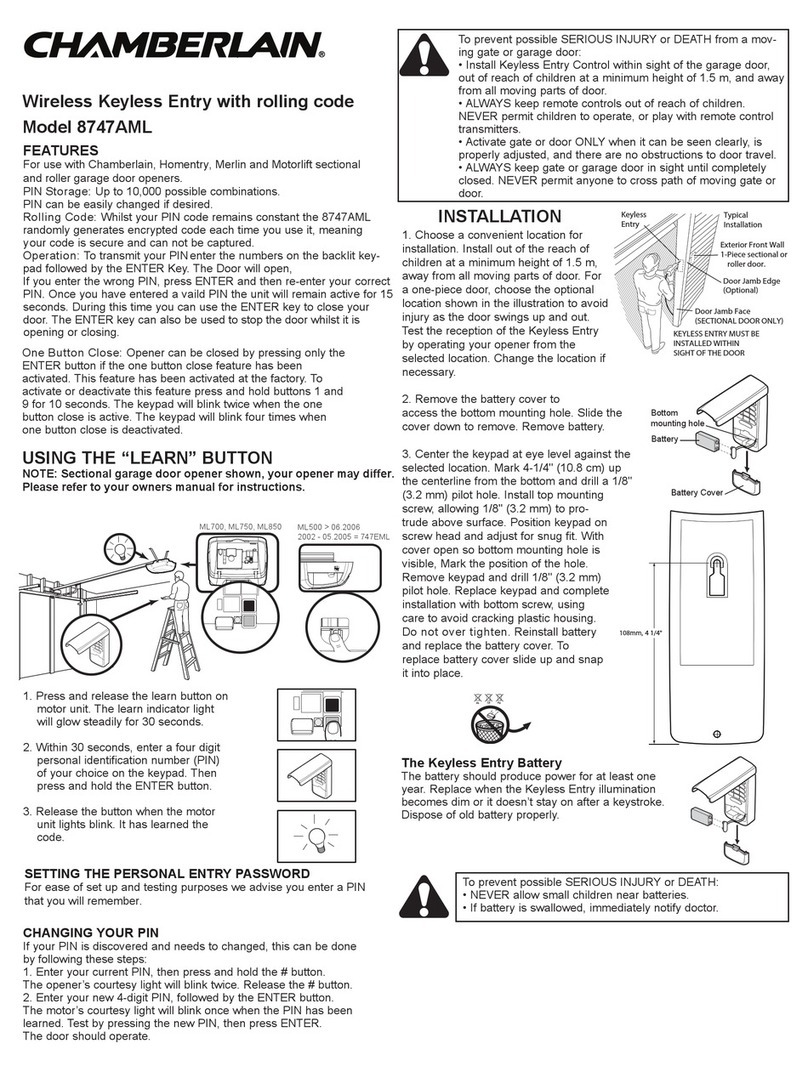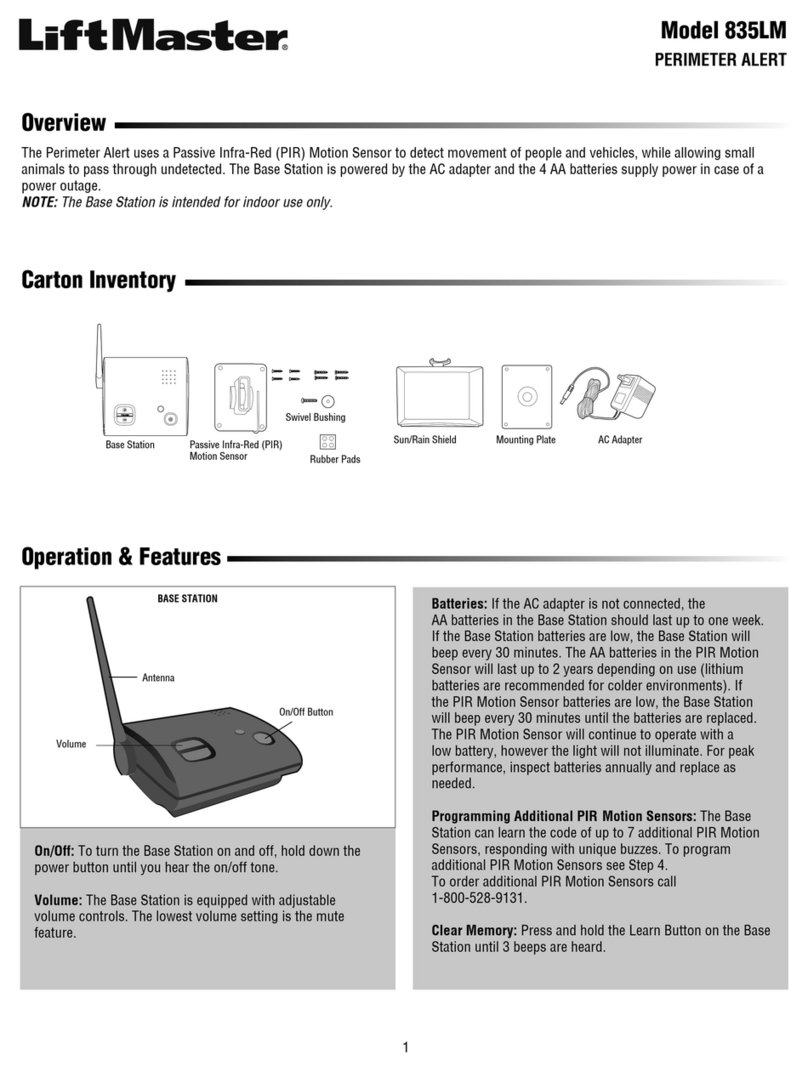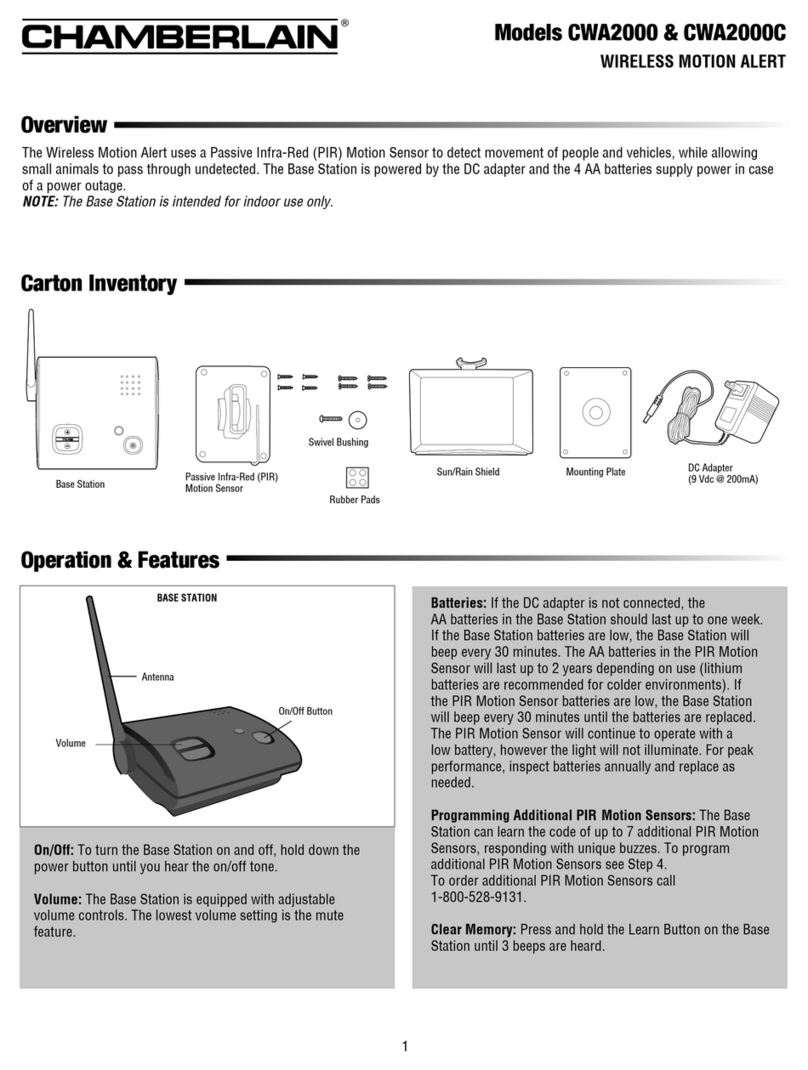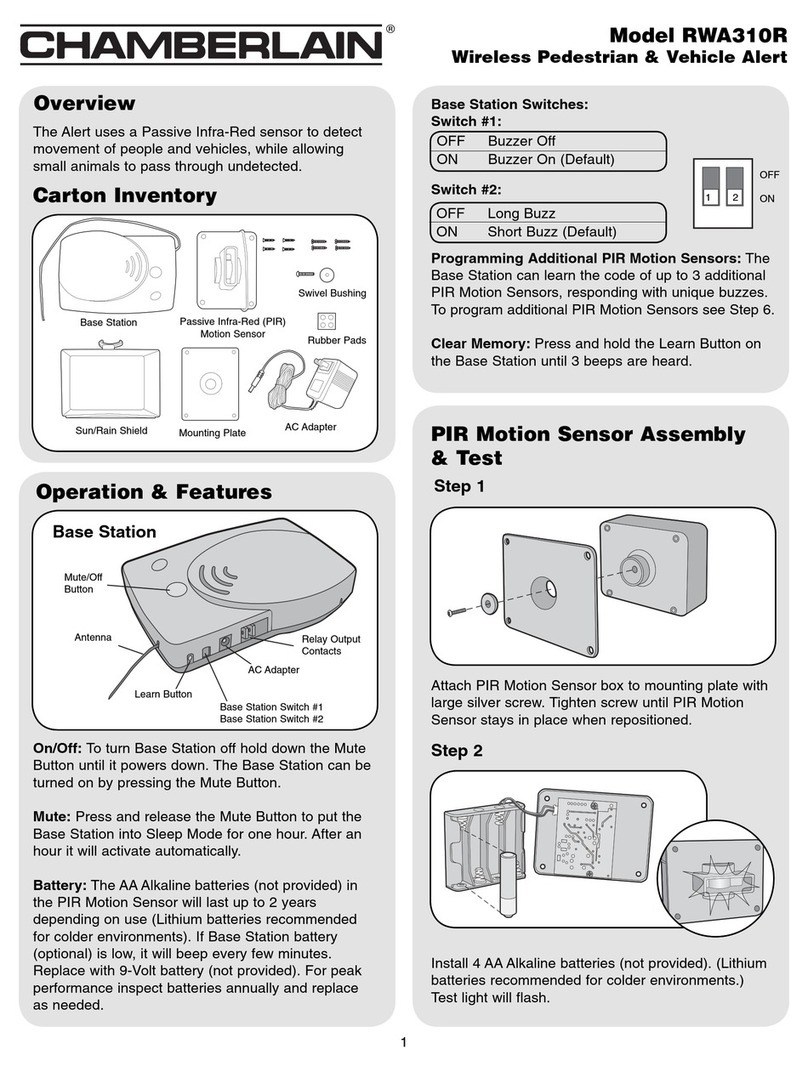Troubleshooting and Frequently Asked Questions
Nothing Happens. The units Do Not Function
Check batteries in PIRV. Moving in front of it should cause the window to dimly blink. Make sure you have followed
the steps to TEACH the units to each other. Make sure the base unit has the power LED illuminated (or Blinking if
battery powered).
The system is not getting the expected transmission range
To assure best range; keep the antenna VERTICAL. Keep the PIRV Unit at least a foot away from trees and metal
objects. It can also help to locate the Base unit near a window with the clearest possible sight of the PIRV Unit.
I cannot hear the Base Unit when it signals
The VOLUME button can be used to increase the volume of speaker, though the motion alert buzzer is not made to
be overly loud. If you need to have a louder alarm, the receiver has a relay that can activate other electrical
devices, such as bells, buzzers, or lights. The relay is a switch that has no power of its own, but can handle up to
120 volts at 10 amps.
The PIRV Unit is picking up people, but not cars
The PIRV sensor is not seeing the car’s hot motor or exhaust. To detect cars, it is best to set the transmitter at
an angle to the road, between ten and twenty feet from the road, and it also helps to have the sensor mounted at
the height of the car’s motor.
The unit is signaling constantly, when there is nothing there
Check for tree branches or other objects that might be moving in a breeze or insects in the sensor window. The
sensor can also be fooled by light shining directly into the window, such as reflected sunlight, or motion in front of
a light source.
There is a short beep every ten minutes
The Base unit is indicating that the Battery is LOW. If PIRV’s batteries are low, the Base unit will emit three high-
pitch beeps, every ten minutes. If the Base Unit’s batteries are low, it will have two high-pitch beeps.
How do I clear the Base Unit’s memory
Press and hold the Learn button, on the Base unit, for 15 seconds. It will give a triple-beep when it has cleared its
memory and you can re-teach PIRV Units to it. If a PIRV Unit signals, while the Learn button is depressed, the
procedure will have to be repeated.
I hear Static and Feedback through the Base Unit
The PIRV is probably to close too the Base unit. Once the PIRV is installed in the desired location, it will operate
normally.
If you have installation or operation questions, please see above, or check out the manufacturer’s web
page at www.chamberlain-DIY.com. You can receive free technical assistance by calling 800.528.9131.
Warranty: This product is warranted to be free of defects for the period of One Year from the date of purchase. The warranty covers
parts, labor, and return shipping to you, but not all accessories. Chamberlain will repair or replace any defective product at our
discretion. Warranty does not cover misuse or damage other than due to normal operating conditions. If you need to send the system in for
repair, contact Chamberlain for a Return Goods Authorization. Packages without a Return Goods Authorization number will be
rejected.
Uses Include…
•Monitoring Gates
•Front Door / Back Door
•Driveways
•Deck & Patio
•Storefronts
•Barn or Shop
•RVs, while at home
•Pools or Area Security
•Home / Office Security
•Detecting Large Animals
THE Wireless Pedestrian &
Vehicle Alert with Voice can
be used to monitor motion
in up to EIGHT locations up
to 1000 feet from the base,
while still allowing small
animals to pass undetected.
The wireless transmitter has
a built-in microphone that
lets you hear what is going
on outside and speak with a
person on the other end.
You can also Remotely
Control an electrical device
near the transmitter, like
Gate Openers, Lights, or
Cameras.
Please read the instructions
carefully.
RWV 10/01/07 ©2007
Wireless Pedestrian & Vehicle
Alert with Voice
FCC STATEMENT
This device complies with FCC part 15 rules. It may not cause harmful interference with other devices, and must accept interference from other devices.
FCC ID: JLFTRX

